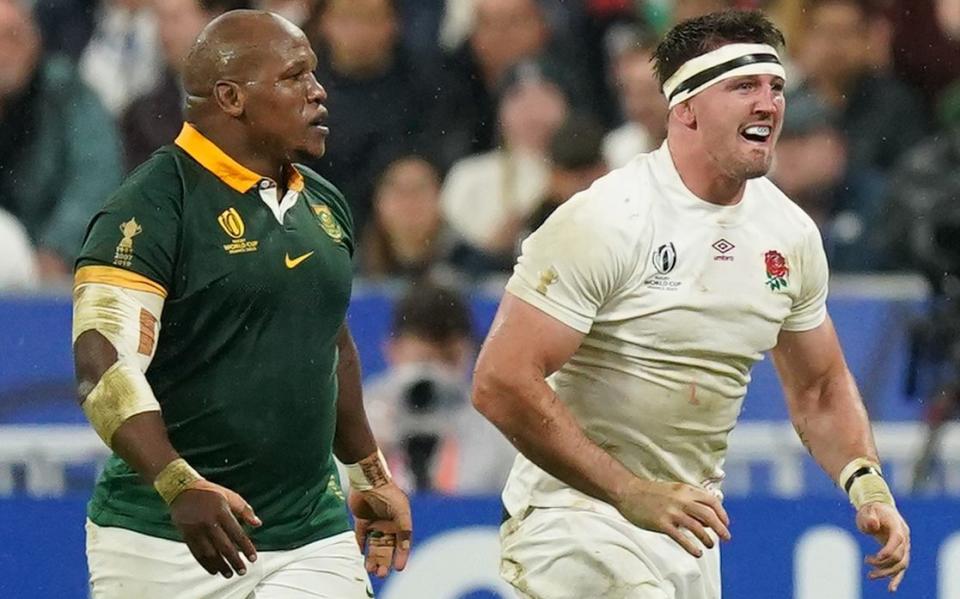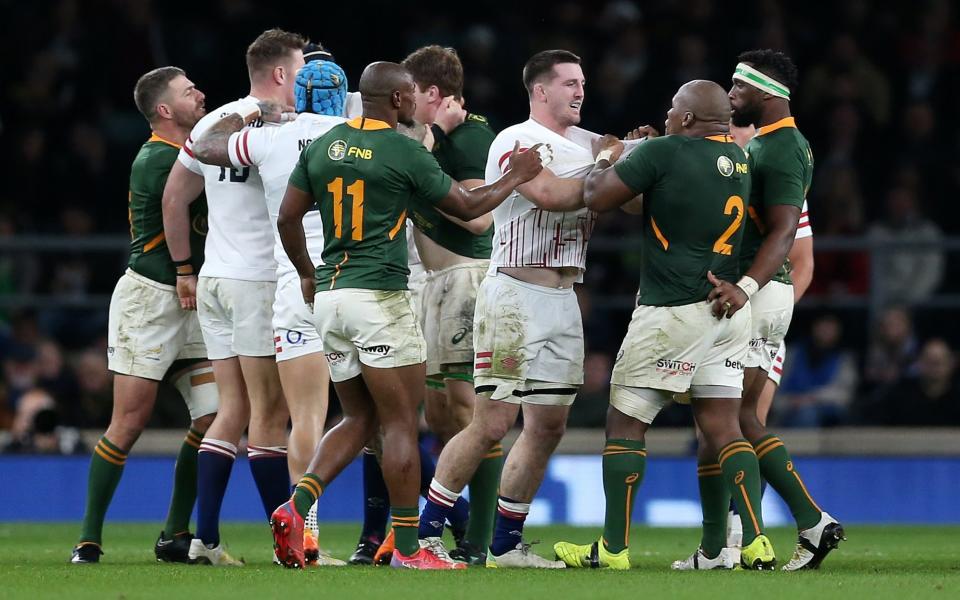Bongi Mbonambi Afrikaans ‘defence’ undermined as new footage is not moment being investigated

New video footage that purports to show Tom Curry being allegedly racially abused by Bongi Mbonambi, the South Africa hooker, is not the moment being investigated by World Rugby, Telegraph Sport can reveal.
It is understood that the global governing body will look into a different exchange, from after the ball had gone out of play, despite a clip demonstrating scope for an innocent misunderstanding.
Video footage emerged on Tuesday morning of Mbonambi appearing to shout something that led to an allegation of racist abuse from Curry during last Saturday’s World Cup semi-final.
The incident occurred in the 24th minute with a fresh camera angle showing the moment Mbonambi tackles Curry, along with team-mate Franco Mostert. After England had been awarded a penalty inside the opposition 22, Curry approached referee Ben O’Keeffe and accused Mbonambi of calling him “a white c---”.
The clip circulating on social media, comprising the match action shot from a spider camera with accompanying audio, was construed as a player shouting what South African fans have suggested is “wit kant”, which is translated as “white side” in Afrikaans.
The audio is also heard with O’Keeffe standing metres from the breakdown and within range of the call, which came as South Africa were desperately scrambling to prevent England from scoring a try.
This occurs as Owen Farrell swings behind the breakdown to attempt a kick-pass towards Elliot Daly under penalty advantage for Siya Kolisi failing to roll away moments earlier.
However, sources have told Telegraph Sport that the moment being investigated happened after Farrell’s kick had gone into touch and O’Keeffe stopped play to come back for the penalty.
There is prior evidence of South Africa using colours to designate different sides of the ruck. During the ‘Chasing the Sun’ documentary produced by Supersport, which charts South Africa’s build-up to the 2019 World Cup and their success at the tournament, Rassie Erasmus describes watching Hershel Jantjies’ last-gasp try in a 16-16 draw with New Zealand in July of that year.
Ironically, it was set up by Willie le Roux moving around the breakdown to feed Cheslin Kolbe, who chipped ahead for his scrum-half to score.
“When Willie swooped around, we knew there was something on and so I started saying – we call it ‘the pink side’, that’s the blindside – ‘the pink is on, the pink is on, the pink is on’.”
Curry and Mbonambi, a pair of combative forwards, were also involved in a prolonged exchange last November at Twickenham when South Africa triumphed 27-13 over England.

On Monday, two days after the Springboks had ousted Steve Borthwick’s side 16-15 to reach the World Cup final against New Zealand, World Rugby confirmed that the incident involving Mbonambi would be looked into.
“World Rugby takes all allegations of discriminatory behaviour extremely seriously,” read a statement from the governing body.
“We can confirm that we are formally reviewing the allegation made by England’s Tom Curry’s in relation to the use of discriminatory language during the England versus South Africa Rugby World Cup 2023 semi-final on Saturday.
“World Rugby will not be making further comment until the conclusion of the process.”
Mbonambi is yet to formally respond to the allegation, but when contacted a South Africa Rugby spokesperson said: “We are aware of the allegation, which we take very seriously, and are reviewing the available evidence. We will engage with Bongi if anything is found to substantiate the claim.”

 Yahoo Sport
Yahoo Sport 





































